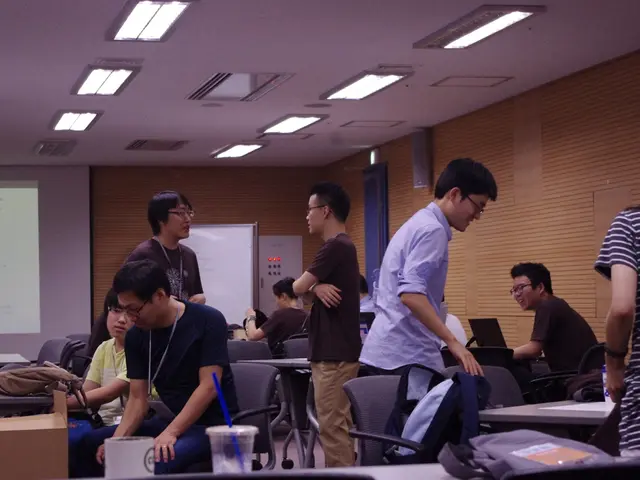Developing Nations Bridge the Gap: Can They Equal Economic Progress of Advanced Nations?
The economic theory of absolute convergence contends that developing countries could one day achieve the same level of income per capita as industrialized nations, given a critical advantage: a comparatively lower capital-to-labor ratio. This theory posits that each additional unit of physical capital, such as machinery or infrastructure, has a more significant impact on productivity in developing nations due to their lower initial amounts.
At the heart of the concept lies the belief that while developing countries are starting from a lower base, their marginal productivity of capital—the output generated by adding one unit of capital—is relatively higher. This, in turn, could theoretically lead to faster economic growth and, eventually, a convergence in income levels between developed and developing countries. Picture two athletes on a track; the developing country commences the race behind the developed nation, but its potential for accelerated progress may let it close the gap.
However, the theory of absolute convergence has its critics. For one, it primarily focuses on capital per worker, potentially neglecting the significance of Total Factor Productivity (TFP) advancements in developed nations. TFP plays a critical role in economic growth by measuring the increase in output that cannot be explained by the growth in labor and capital inputs—often attributed to technological innovation and production process improvements.
Developed countries have a substantial benefit in TFP, leading to continuous technological advancements that improve efficiency and productivity. This moving target makes it challenging for developing countries to catch up, as the developed world is perpetually pushing the boundaries of TFP. Experimental evidence shows that developing countries have not been converging at the rate that the theory of absolute convergence predicts, suggesting that factors beyond capital per worker play a more extensive role in eventual economic growth.
Beyond capital and TFP, fostering innovation, building human capital, and establishing strong institutions play crucial roles in fostering sustained economic growth. Investments in infrastructure, education, and institutional reforms must complement traditional capital investments to create a foundation for overall economic development. Only addressing these multifaceted elements can pave the way for developing countries to bridge the gap with developed nations and achieve a more prosperous future.
In the context of economic development, investing in education-and-self-development, along with infrastructure, is crucial. This is because, beyond capital and Total Factor Productivity (TFP), fostering human capital is essential for sustained economic growth.
Moreover, while developing countries may have a relatively higher marginal productivity of capital, the continuous technological advancements in developed countries, often attributed to TFP, present a challenge that requires attention in the realm of finance and business.





